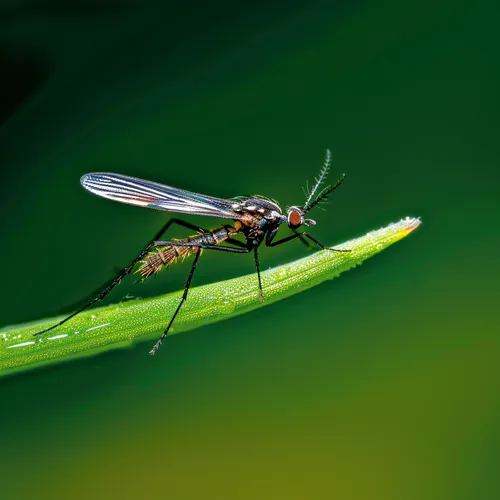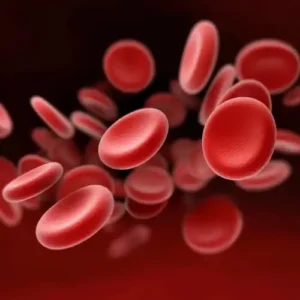The Buzzing Menace
Ever wondered why those little midges seem to have you itching and scratching? Surprise, surprise—it’s not an irritation issue; you’re having a real allergic reaction. When these pesky raiders sink their teeth into you, they’re basically pumping you with certain chemicals that ring alarm bells all over your body. Not to worry, we’re here to arm you with knowledge and strategies to fight these winged fiends.
Meet The Midge: Nature’s Tiny Vampire
Midges aren’t actually a single breed of fly but more of a cast of characters in their own right, with over 35 different species in Scotland alone. Here’s one that’ll make you laugh, or recoil in horror: only the girls bite. Yep, you read that right—female midges need your blood to reproduce. High maintenance if you ask me.
Although these miniature monsters are small—only growing to 1/8th of an inch—they can definitely pack an irritating punch. Their bite can cause reactions ranging from simple annoyance to something even more serious, like allergic responses. So let’s dive into what happens when these bloodsuckers strike.
The Midge Lifecycle: From Egg To Airborne Menace
Ever wondered how these tiny terrors come into existence? Let’s dive into the fascinating (and slightly creepy) world of midge development. Buckle up, it’s going to be a wild ride!
Our story begins in still water, where female midges lay their eggs. These minuscule marvels of nature are barely visible to the naked eye, but don’t let their size fool you. Each egg is a ticking time bomb of irritation waiting to hatch.
After a few days, the eggs transform into larvae. Picture tiny, worm-like creatures wriggling about in the water. They’re not exactly cute, but they’re not biting you yet, so that’s a plus. These aquatic acrobats spend their time feasting on organic matter and growing stronger by the day.
Next up, it’s pupae time! The larvae enter a sort of “midge cocoon” phase. They’re not quite adults, but they’re getting there. It’s like the awkward teenage years of the midge world. They float near the water’s surface, eagerly anticipating their grand debut.
Finally, after about two weeks of preparation, adult midges emerge. They take to the skies in swarms, ready to make your outdoor adventures a bit more… exciting. The males are relatively harmless, content to buzz around and look pretty. But the females? They’re on a mission for blood, and your arm looks like the perfect landing pad.
Here’s a fun fact to impress (or horrify) your friends: a single midge can lay up to 200 eggs at a time. Talk about a population explosion! It’s no wonder these little biters seem to be everywhere during midge season.
Understanding the midge lifecycle isn’t just about satisfying your curiosity. It can help you predict when and where these pests might be most active. For instance, areas with standing water are prime real estate for midge breeding. So, if you’re planning a picnic, maybe steer clear of that pond with the suspiciously large number of buzzing insects.
Remember, knowledge is power in the war against midges. The more you know about these tiny troublemakers, the better equipped you’ll be to outsmart them. So next time you’re swatting away a swarm, take a moment to appreciate the complex journey that brought those midges to your personal space. Then, of course, feel free to continue swatting.
The Aftermath: Allergic Reactions To Midge Bites
When a midge bites, it leaves behind more than a bad memory. You might see:
- A cluster of red, angry dots
- Swelling and redness
- That crazy itch
Now, here’s where it gets interesting. Depending on how your body decides to react, you might go through different strengths of allergic reactions. These can range from minor reactions, with simple swelling, redness, and itching, to localised reactions, adding hives, watery eyes, and a runny nose into the mix. In systemic reactions, the whole body joins the rebellion in the form of nausea, stomach aches, and even asthma attacks.
Anaphylaxis: This is the big one, folks. If you find it hard to catch a breath, feel faint, or are experiencing a racing heartbeat, it’s time to call 999 pronto!
Fighting Back: Treating Midge Bites
Don’t let these tiny terrors ruin your day. Here are a few tried-and-tested tactics to deal with the itch and discomfort:
- Cool it down: A cool, damp washcloth or an ice pack can work wonders.
- Pop an antihistamine: These little pills can help tame your body’s overreaction.
- Slather on some cream: Itch relief or antiseptic creams can soothe the bite and prevent infection if you’ve been scratching.
Outsmarting The Enemy: Prevention Is Key
With midge numbers on the rise, it’s time to get strategic. Here’s how to keep these bloodsuckers at bay:
- Avoid their hangouts: Midges love marshes and ponds, so steer clear if you can.
- Time it right: These vampires do most of their dirty work at dusk and dawn. Plan your outdoor adventures accordingly.
- Gear up: Slap on long-sleeved shirts and trousers, and don’t forget the insect repellent; make sure it contains DEET in the ingredients.
Your Midge-Fighting Arsenal
At Zoom Health, we’ve got your back (and your arms, and your legs) with regard to battling these little bitey bugs. So, arm yourself with a good stock of itch relief creams and antihistamines, and keep the midge misery at bay.
Note that while midge bites are more plain frustrating than life-threatening in most cases, it’s always better to err on the side of caution. Hence, arm yourself with knowledge, put up that supply of necessary materials, and show those midges who’s boss!
Now, get out there and make this summer yours—just remember to pack your midge-fighting kit!
Photo “Midges” by Anthony Cunningham for Zoom Health
Zoom Health is a leading UK supplier of Home Health Tests and Earplugs





